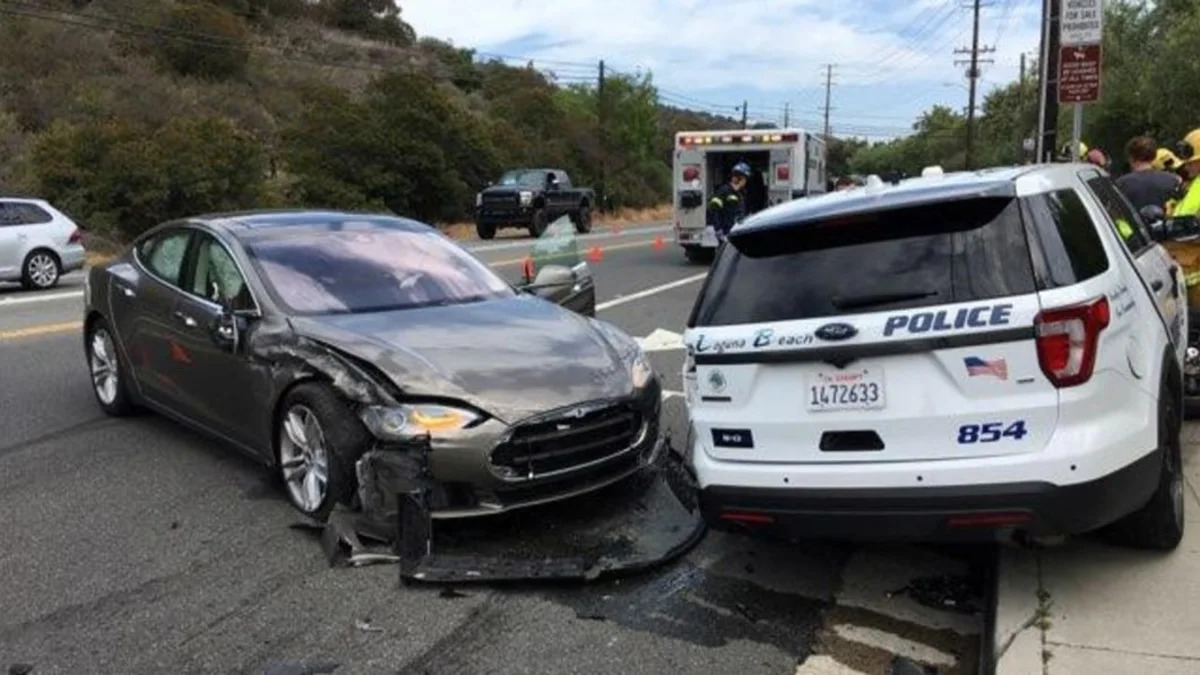Tesla has quietly made a significant improvement to its Autopilot suite of electronic driving aids. As of September 2021, in the midst of a federal investigation, some of the cars equipped with the technology gained the ability to slow down when they detect emergency lights.
Instead of letting its CEO announce the new feature on Twitter, the California-based firm merely updated the online owner's manual for the Model 3 and the Model Y. "If the Model 3/ Model Y detects lights from an emergency vehicle when using Autosteer at night on a high-speed road, the driving speed is automatically reduced and the touchscreen displays a message informing you of the slowdown," the update explains. It adds that the system will also emit a chime to remind motorists that they need to keep both hands on the steering wheel and stay aware.
Autopilot automatically resumes the previously-set cruising speed when the system no longer detects the lights. Tesla adds that drivers should never rely on Autopilot to detect the presence of emergency lights, and that its cars may not detect them in all situations.
On the surface, this is a latest in a series of improvements made to Autopilot — the timing is odd, however. There have been several reports of Tesla cars slamming into parked emergency vehicles while allegedly traveling on Autopilot; 11 crashes have been reported since 2018, leaving at least 17 people injured and killing one. The trend caught the attention of the National Highway Traffic Safety Administration (NHTSA), which opened a probe into the crashes on August 16, 2021. It covers almost every Tesla sold here since the 2014 model year.
The investigation is ongoing, so its results haven't been made public yet, but NHTSA asked Tesla to explain how its Autopilot system detects and reacts to emergency vehicles parked on highways on September 1. Tesla has until October 22 to respond or seek an extension. NHTSA has also asked 12 other automakers to provide information on how their systems react to those situations.
Giving cars the ability to identify emergency vehicles is a big step forward, but the feature leaves a lot of unanswered questions. It can only detect lights "at night on a high-speed road" — what happens during the day, in a dense urban area, or both? Can it detect traffic cones and reflective vests? We'll need to wait until the investigation's results are published to learn more about the issue and the proposed solution.


Sign in to post
Please sign in to leave a comment.
Continue